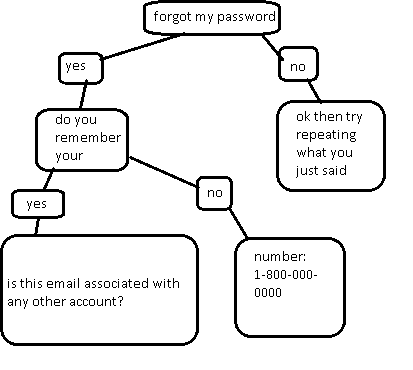Can aws-lex be used to build a conversation flow bot?
For example:
Is there a way to do something like this in aws-lex or not?
I tried using slots/prompts/lambda but I am not able to go to 2nd or 3rd level depth in diagram. can be done somehow?
Thank you very much!
Reason for all this: So we have our own "dialogue builder" and "bot-service". Our own "Dialogue Builder": is maybe similar to Amazon Connect dialogue builder, and our own "Bot-service" is similar to Microsoft bot framework. Before we were using microsoft-luis to get "intention" of a sentence while using our own dialogue builder and our own bot-service to build a conversation/dialogues flow like if a user says "yes" then go to another flow and if a user says "no" then go to different flow (can this be done in slots?) === Binary tree :)
So now we are switching from luis to aws-lex and trying to think if it is possible to just use aws-lex UI and not our (dialogue builder/bot-service) anymore. But what I am understanding is that to use aws-lex without some kind of dialogue builder we would need to write alot of if/case statements if it contains large data, right? what is your suggestion? One way would be to just use "Amazon Connect" to utilize their dialogue builder so we don't have to write alot of if statements but then if we are using dialogue builder we can just use our own (old one) dialogue builder? what do you think?

